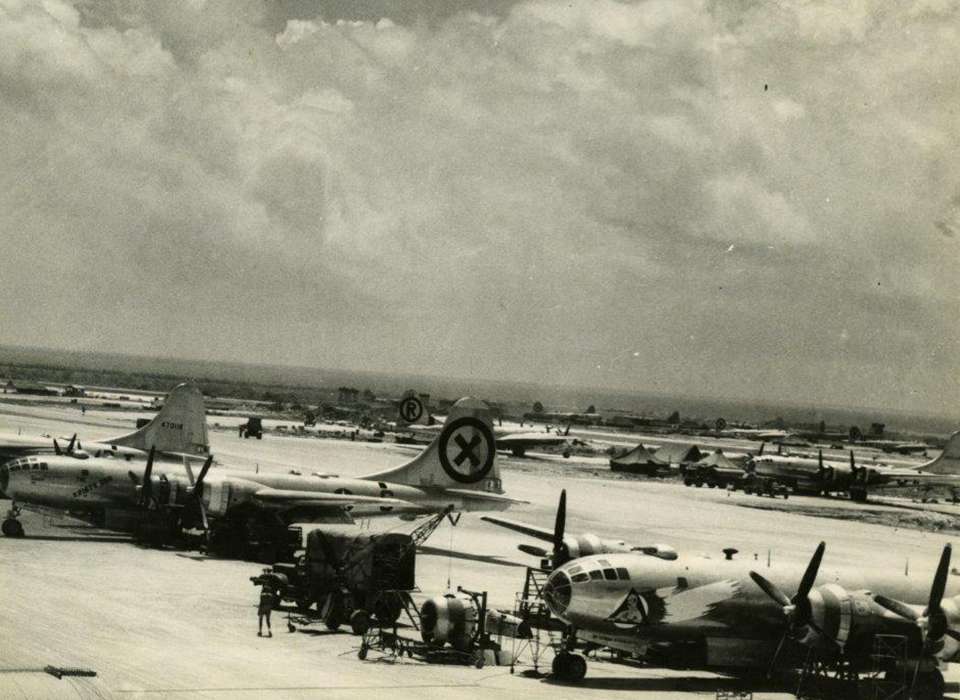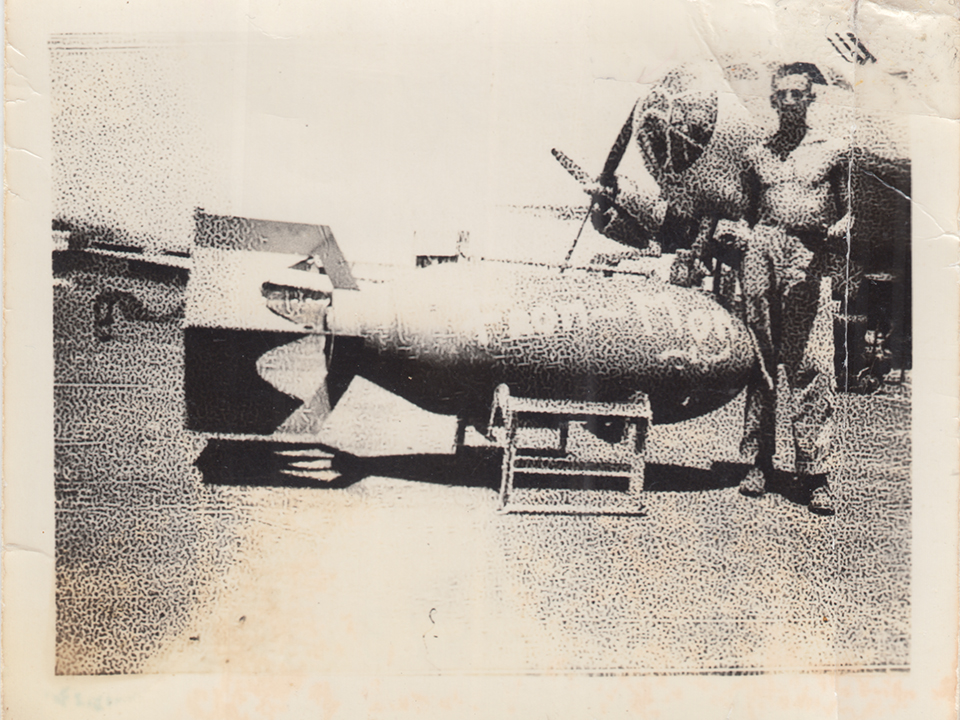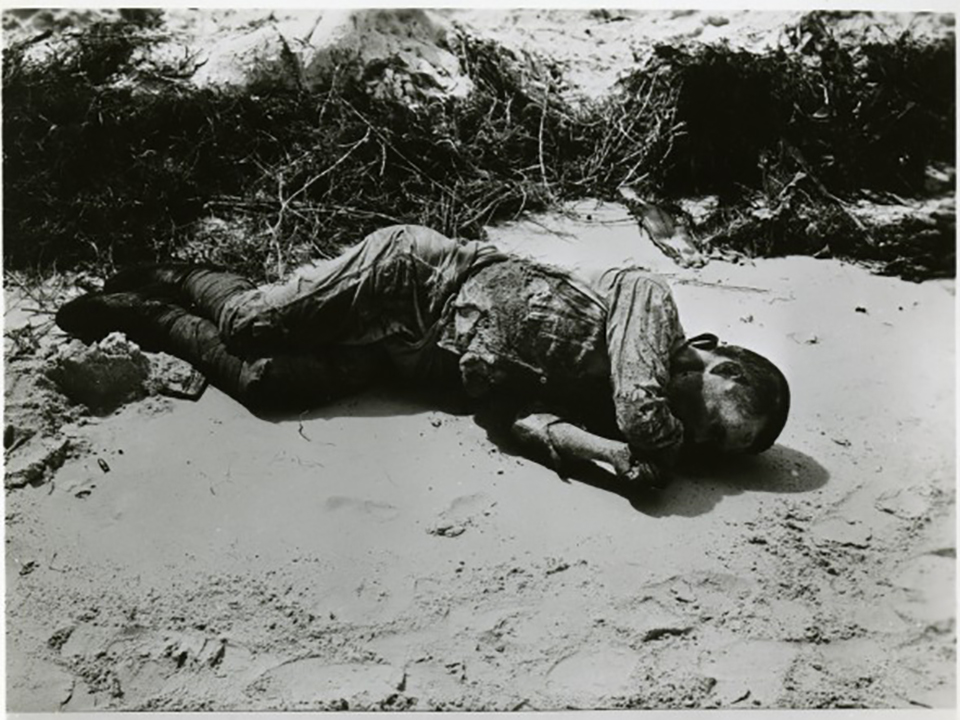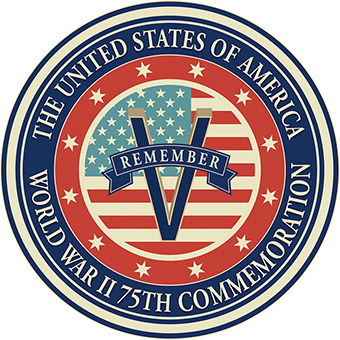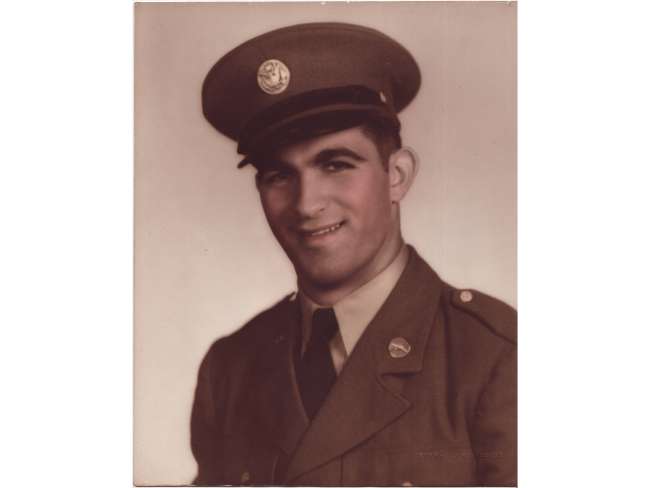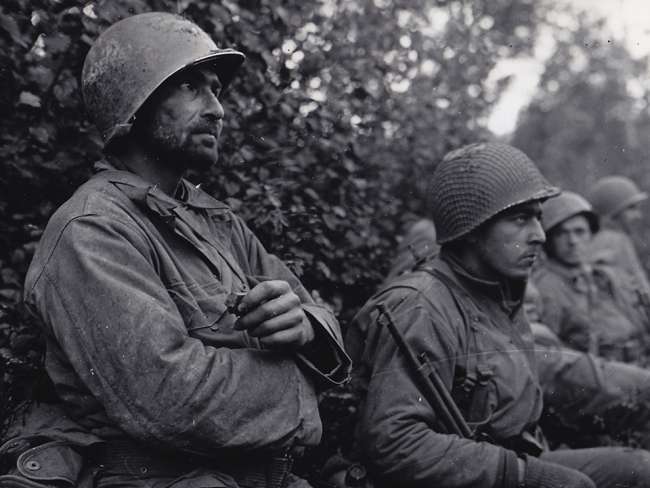B-29s parked at an air base on Saipan, 1945-46. The National WWII Museum, Gift in Memory "Ham" Hamilton, 2010.216.355.
At the close of World War II, Jack Brukman’s mother went to the bank to get a loan. Since she had been diagnosed with Parkinson’s Disease, she made an X instead of her initials for the loan request. The bank teller loudly stated, “You expect me to give you money with this ‘X’?!” Embarrassed by the teller, his mother’s shaking increased. Brukman, in his Army Air Corps uniform, moved quickly and angrily grabbing the man’s tie, yanking it forward, thrusting his face to the teller’s saying “You’re talking to my mother!”
A self-proclaimed mama’s boy, Jack Brukman was the youngest in his family. He was born in California and lived in a mixed working-class neighborhood. Antisemitism introduced itself early on in Brukman’s life, resulting in him having what his brother nicknamed “dancing hands,” or rather being very adept at fighting. Brukman’s father emigrated from Poland where he was hated for being Jewish. In fact, he was initially overcome with joy when Germany invaded Poland, such was his disgust with the Polish people. Some of the family residing in Poland relocated to Russia after the invasion, but not all left. Brukman’s grandfather paid non-Jewish Poles to hide the younger members of the family from the Germans. When the money ran out so did their hospitality. His father lost about 50 family members—executed in the Holocaust.
After the Japanese attacked Pearl Harbor, Brukman was drafted into the army; this was a maturing experience. He served on a ground crew servicing B-29s with the 498th Bombardment Group stationed on Saipan. When they arrived, the island was mostly secure but nothing was ready. Brukman spent six to eight weeks in a pup tent. They bathed in the ocean and the copious amounts of rain opened the graves of freshly buried Japanese soldiers, leaving the partially decomposed bodies in the open. Brukman stood guard as part of his duties and experienced his first taste of combat when he encountered an enemy Japanese, bayoneted him and blew him off the blade as he was instructed.
Once the runway was constructed, the flights dictated his day. Constantly hot and raining, the returning flights were coming off a 15-hour trip. Brukman worked with the crew to get the planes off the runway as quickly as possible so the mechanics could fix everything that was repeatedly falling apart on the B-29s. A young kid named Mike came in from off a raid. He had taken a direct hit on the side of the plane that blew his arm off. He was bleeding out. When the plane landed, everyone in the vicinity gathered around to assist the B-29 crew. Brukman looked at the doctor for a diagnosis; the doctor said “There’s no hope on this kid.” Mike uttered, “I want my momma, I want my momma” just as his eyes rolled over. He was gone.
Hiroshima and Nagasaki were devastated by atomic bombs shortly before the Japanese surrendered. The crewmen with the 498th then prepared to return to the states with an initial stop in Hawaii. “When we got 50 miles from Honolulu and I saw the lights…on the horizon, I saw the bright lights of Honolulu after 15 months in darkness and it threw me.” Brukman felt the disassociation with the reality he was approaching, he didn’t seem to be a part of that anymore and it was a strange feeling. Returning from the antithesis of society, Brukman was operating at a level where one walked with death daily to visiting the butcher with one’s mother.
Brukman’s older brother had concerns regarding Brukman’s irregular behavior and insisted he see a doctor. The doctor could find nothing physically wrong. His older brother, unsatisfied, sent him to Camp Pendleton to a doctor who specifically saw military servicemen returning from the Pacific. The psychiatrist there spoke with Brukman and convinced him to have another “go at life” and to return if it still wasn’t working out. Decades later, Brukman recalled there were times he would “just go sad.” He stated “I would just, I would get sad…when the sadness developed it normally came out of joy.” Brukman’s wife mercifully understood him.
Military servicemen returned to the states from the Pacific theater, the China-Burma-India theater, and the European theater when the war ended. They brought the war back with them. Perhaps on the outside these men returned, attended colleges, got married, started families, and made careers. But internally they can still feel the bitter frost from the Battle of the Bulge, the drop in the pit of their stomach as their plane made it over The Hump, the pungent smell of bodies unearthed on Saipan, the human fear as they heard artillery sounding out, or the heaviness of a dead body on them. These men have been marked in their memories. Fragments of them remain with fallen buddies in graves throughout the world.
Dead Japanese soldier on a beach, Saipan, 1944. The National WWII Museum, Gift in memory of Sgt. Lyle E. Eberspecher, 2013.495.033.
When asked, Jack Brukman remarks on what returned with him when he went home, and what has been his constant companion for life: “I can hear that right now. I’ve heard it almost every day of my life. That’s the one thing I do hear that I can still…that’s the only thing that really bothers me is the fact that I can hear his little voice crying for his mother, that always got to me.” This is the challenge of making the mental shift from combat to civilian life.
This article is part of a series commemorating the 75th anniversary of the end of World War II made possible by the Department of Defense.
Hannah Dailey
Hannah Dailey has been an Oral Historian at The National WWII Museum since 2015 and has conducted more than 550 oral history interviews to date, several of which are showcased in our permanent galleries.
Cite this article:
MLA Citation:
APA Citation:
Chicago Style Citation:
